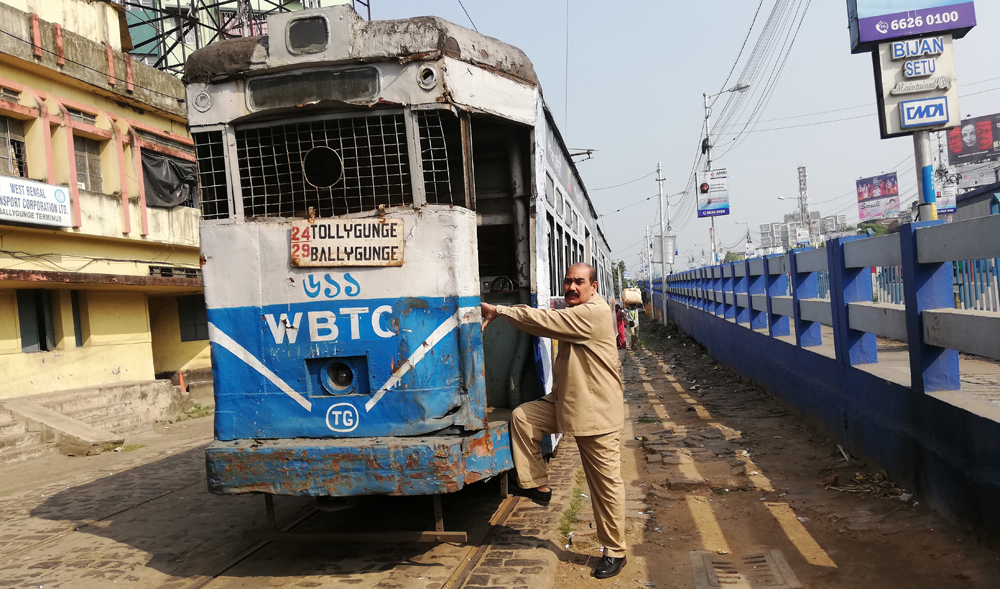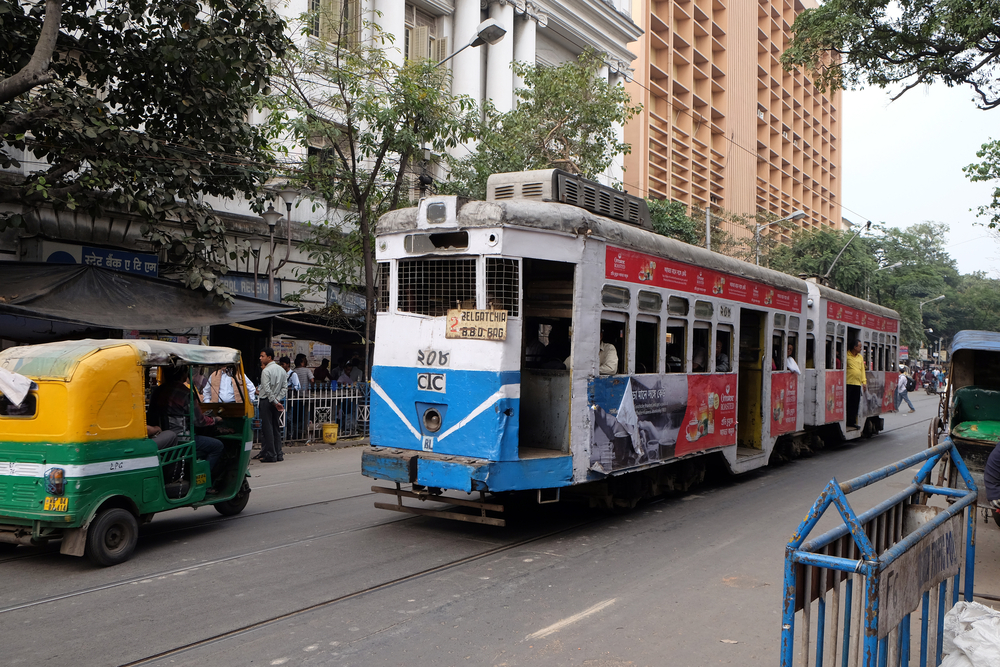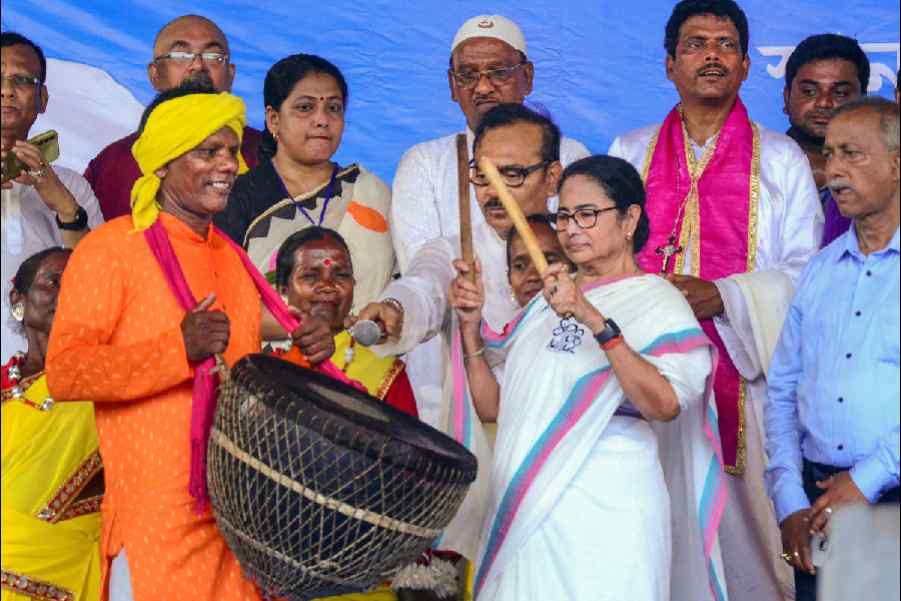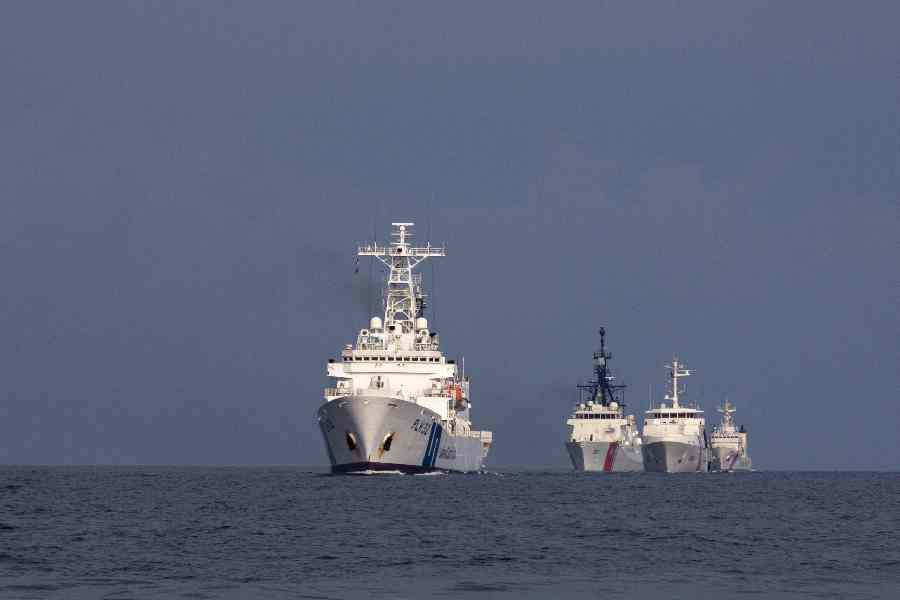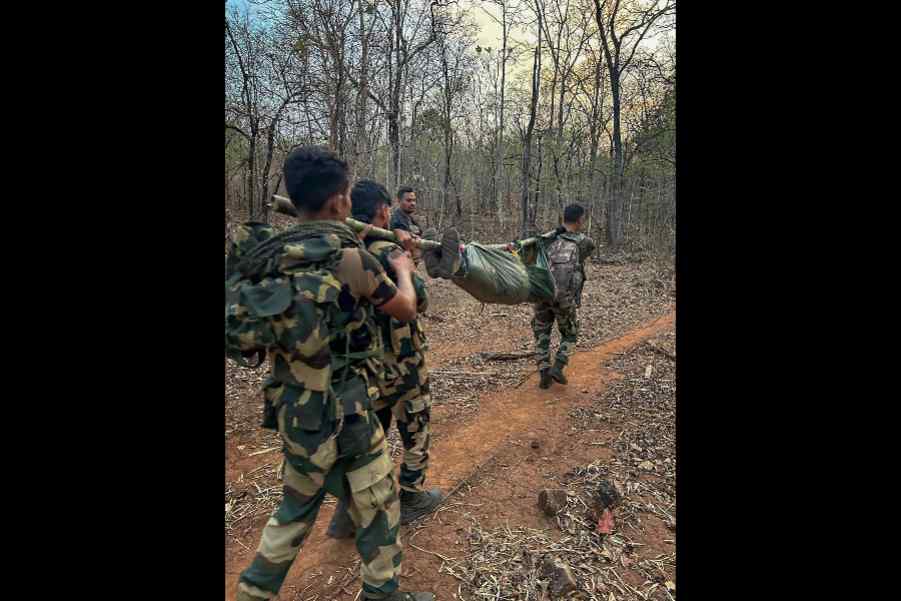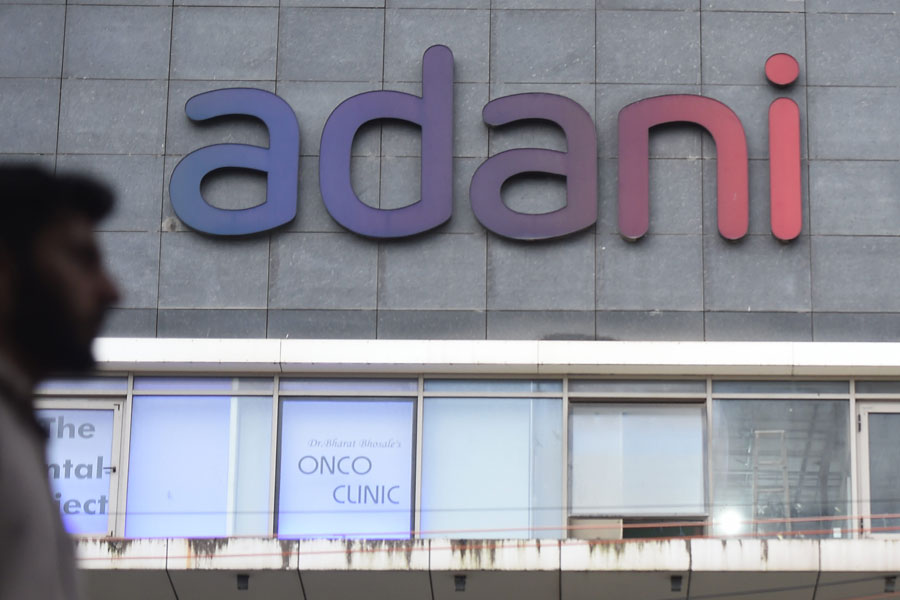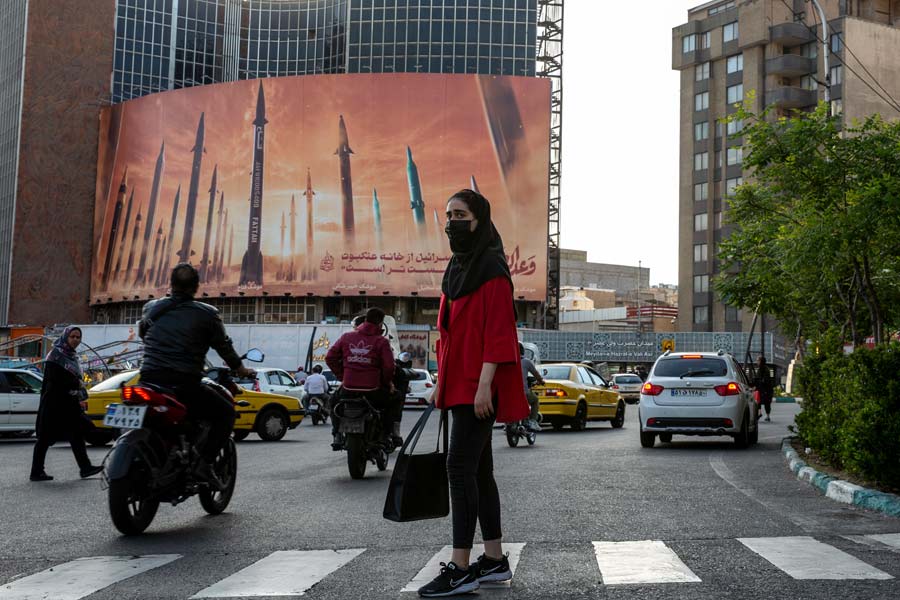Bramha Shankar Singh can count on his fingers the number of days left of his service. “Thirteen,” says the tram driver with a smile. The last 40 years Singh has seen the world from the driver’s cabin. “I have witnessed it go from being the lifeline of the city to becoming merely another alternative. A lesser alternative at that,” he says, throwing up his arms in semi-despair.
Singh and I are sitting in a small room in the two-storey office building of the junior traffic officer at south Calcutta’s Tollygunge Tram Depot. From the window of this room one can spot six to seven tramcars queued up, waiting for passengers before pulling out. The one at the farthest corner is no longer functional — its body is all rusty; it may have to be refurbished before it can get back on track.
Once Singh is assigned the day’s duty, we get into a Ballygunge-bound tram; there are only two passengers sitting inside. The conductor tugs at two overhead strings and the bell rings out — Tring, tring. The tramcar heaves itself out of the depot and picks up speed, taking a turn at the feet of matinee idol Uttam Kumar at Tollygunge crossing.
My co-passengers are a father and son duo. “We take the tram every Saturday while returning from his cricket practice,” says Shashanko Mondal. He says he takes the tram as there is no rush, no crowd and the ride is a pleasant one. He cannot quite explain his pleasure though, only says, “madhurjo-i alada”. Meaning, it has a different beauty altogether.
Singh had joined service in 1980 when his father, who was a tram conductor, declared Singh his nominee. In a gruff voice he goes on, “I was working in a sugarcane factory in Uttar Pradesh but my father insisted the job of a tram driver would be better.” He strains to speak louder as the ghrr ghrrr ghrrrr of the tramcar and the occasional swish swash of the brakes drown out all other sounds. Singh is talking about the changing uniforms. He says, “Our uniforms have changed. It is blue now.” But Singh is himself in khaki that day. His uniform has a badge pinned to the breast pocket that says “No. 1325”.
Before Singh could start driving a tram in the 1970s, he had to undergo training. He says, “We had to go through three months of rigorous training. From Tollygunge to Ballygunge a one-coach tram would carry all the trainees and the trainer. We would have lessons on the tram. By turn we would also have to drive the car.” A tram driver has to use both hands to pull the lever that sets the tram in motion and to release the vacuum brakes that stop the car. “The horn is on the floor which we have to tap with our feet,” says Singh laughing. According to Singh, his father would always tell him — “Keep your head cool and be alert.” He explains, “For a tram driver his ears are his eyes. There are no mirrors to watch out for vehicles overtaking the tram.”
Calcutta got its first tram service in 1873. Those days trams were pulled by horses. The first route possibly was Sealdah to Armenian Ghat Street; it was all of four kilometres. In the book, Municipal Calcutta: Its Institution In Their Origin and Growth, S.W. Goode makes it clear that tramways were laid out not for passenger commute but for the transportation of goods.
The tramways, Goode writes, were “chiefly used for the removal of country produce from Sealdah Station to the godown situated in the vicinity of Strand Road and Sobha Bazar [Sovabazar], where they would be stored by wholesale merchants…” But after nine months of its launch, the services were stopped. Reason: it was running at a loss of Rs 500 a month.

In 1880, the British formed the Calcutta Tramways Company; it was registered in London. Metre-gauge horse-drawn tram tracks were laid on the same stretch and Lord Ripon, who was then the Viceroy of India, inaugurated the operation.
In 1880, the British formed the Calcutta Tramways Company; it was registered in London. Metre-gauge horse-drawn tram tracks were laid on the same stretch and Lord Ripon, who was then the Viceroy of India, inaugurated the operation. Says Singh, “My father had never seen a horse-drawn tramcar, but he told me he used to know people who had operated the steam car.” As for Singh, he talks about how he witnessed tramcars metamorphose from wooden bodied carriages to all-steel things.
Towards the end of the 1800s, the horse-drawn tramcars were done away with — the horses could not bear the strain in the tropical climate. In 1882, the company was allowed to run steam engines on the Chowringhee line for a month before it became a long-standing solution. The same year, the company obtained permission to “run locomotives down Chowringhee, to provide transport for the pilgrims to and from Kalighat,” writes Goode. The tracks were changed from metre-gauge to standard-gauge. And the first electric tramcar running between Esplanade and Kidderpore debuted in 1902. The Esplanade-Kalighat route was also introduced that year.
In the subsequent years, the tram services were extended to Tollygunge, Belgachia, Sealdah, Baghbazar, College Street and to Howrah Station. Tramcars crisscrossed Moulali, Nonapukur, Wattganj, Jatin Das Park, Alipore and Behala. Sometime in early 1943, tramtracks on the Howrah Bridge connected Calcutta and Howrah and with this extension, the total length of the tracks went up to 67.59 kilometres.
Years went by and the tram became an important means of public transport. “Though the Kidderpore Tram Depot is still in operation, the Kalighat depot has ceased to exist,” says Singh. In its heyday, the trams had 10 depots, he adds. These were located at some of the most important junctures — Tollygunge, Ballygunge, Kalighat, Gariahat, Park Circus, Kidderpore, Rajabazar, Belgachia, Howrah and Nonapukur. Today, only six are functional. Singh rattles off, “Nonapukur is the place where tramcars are built and sent for repair work. The depots at Kalighat, Park Circus and Howrah have been closed down. The Belgachia depot is out of service, albeit temporarily…”
The golden period of tramways was when the British were still in India. Says Singh, “I have heard stories from my father about how in the 1950s and 60s, office-goers would take the tram. Anglo-Indian women who worked in offices would get off at central Calcutta in the morning and take the tram back home in the evening. School and college students would ride the tram. And why not? It was quite cheap.”
Another day at the Esplanade terminus I come across Arijit Thakur and his nephew, Akash. For three years the two have been taking a tram every Saturday afternoon from Esplanade to Shyambazar market.
“I do it merely for the ride. I enjoy it thoroughly — the rhythm through the nooks and corners of old Calcutta, the market area, everything is so refreshing,” says Arijit who works in a software company. Arijit is no ordinary commuter — he is a tram fan. Recently, he has been to the workshop in Nonapukur where the coaches are manufactured. He is full of tram trivia and now he is trying to inject the same enthusiasm into his nephew.
As the tram moves from Esplanade to College Street, students hop in. “The tram does not arrive at any scheduled time and one has to wait for at least half-an-hour but still it is a comfortable ride. It is not overcrowded; the ride is not bumpy either. It has one designated track, hence there is no competition, no sharp turns or rash driving. It is safe,” says Jhumpa Mondal, who is a student of Bethune College.
“You should come in the morning hours — between 6.30 and 10,” says Rima Das who has a tea stall at the Esplanade crossing. She continues, “The frequency of the tram is better then. Office-goers stand in long queues to get into them.”
The tramlines of the city used to be on the left side of the road. There were proper stations for the trams where people would wait for the tramcars. When Singh started out, the cost of a ride was 10 paisa. There was, of course, the first class and the second class.
Singh explains, “This division was created by the British who wanted to keep a distance from the Indians. Later, the first class was for babus and the second for the working class. The second class did not have fans and the seating arrangement was different — benches skirting the carriage and an empty space in the middle. But the difference in fare was very little.”
According to Singh, the first nail was driven into the coffin of the tramways in 1967, the year Calcutta Tramways Company was nationalised. Within three years, the Howrah section was closed down. The Nimtala route was closed down in 1973. The total track length came down to 61.2 kilometres, but no one is able to confirm what percentage of that includes tracks that continue to be active. More routes were closed down over the years. The tramlines on Bentinck Street and Ashutosh Mukherjee Road were closed down for the construction of the Metro railways, never to be reopened; the Sealdah Station terminus too was done away with. From being the main mode of transportation of goods, it has come to be identified as a slow and cheap coach — shorn of all glory and worth. Singh laments this fall.
In 1953, the Communist Party staged an agitation when the second-class fare went up by one paisa. Says Singh, “Today, the price of a ticket from Tollygunge to Ballygunge, which is all of 5.5 kilometres, is Rs 7. There is no second class. Fans have been installed.” In 2007, the lines were shifted to the right side of the road, going against the original wisdom of the city planners, and throwing traffic into permanent chaos.
Says Thakur, “Let the government bring in as many changes as it wants. I just hope and appeal to the good sense of the government to not shut down the city’s tram service.” He adds, “And mind you, it is not at all a slow ride. It has speed and a flow that does not push one out of one’s daydream.”

